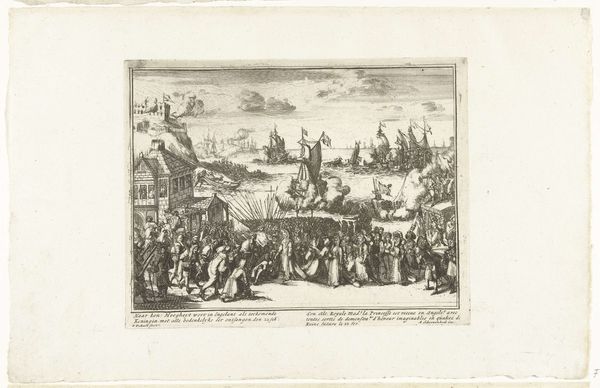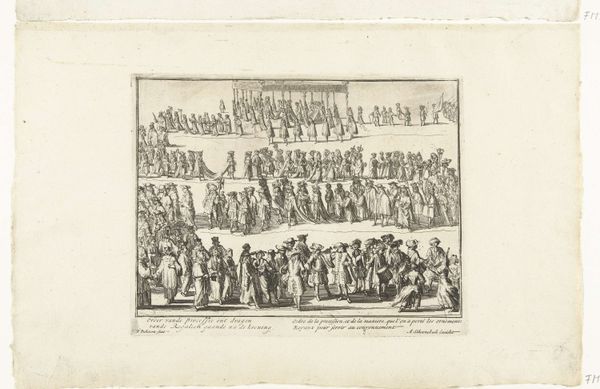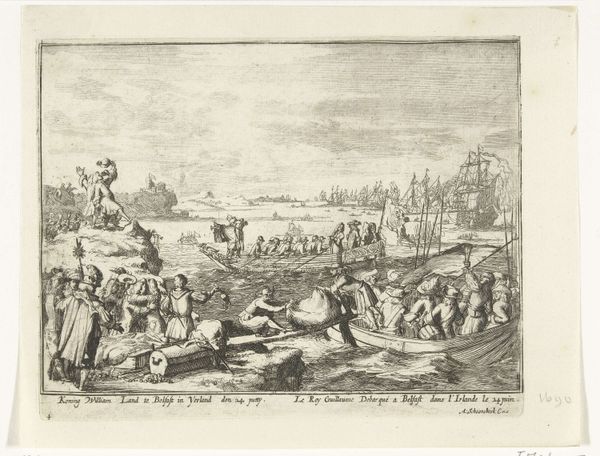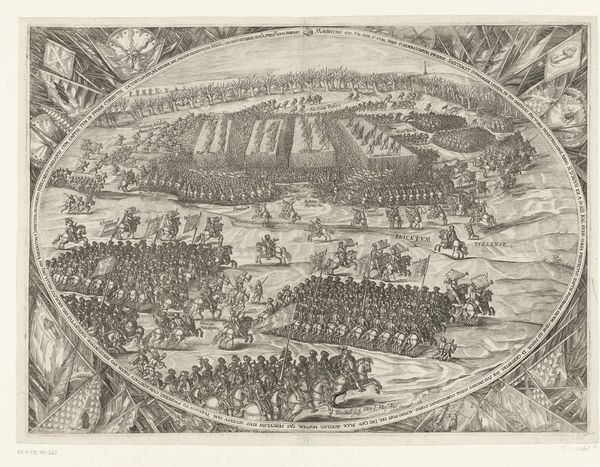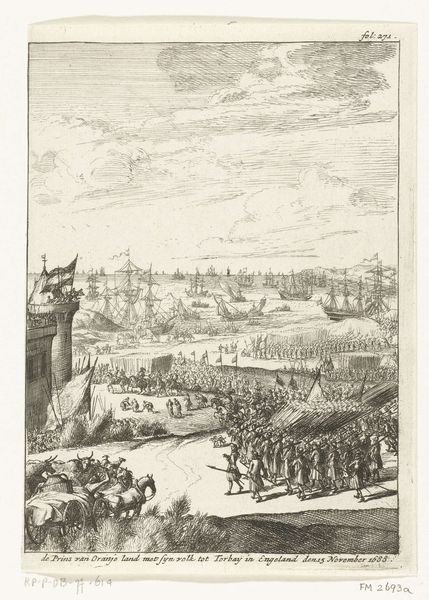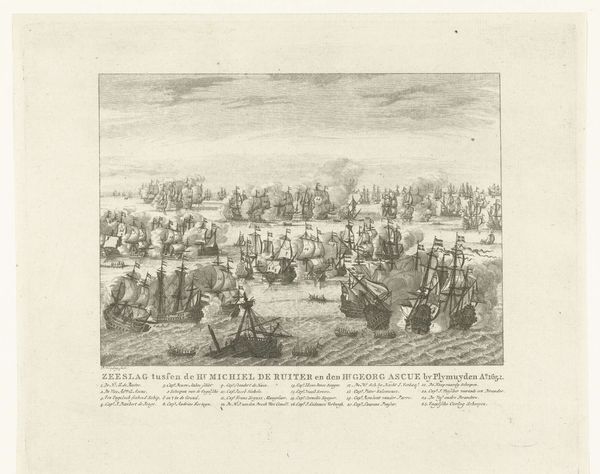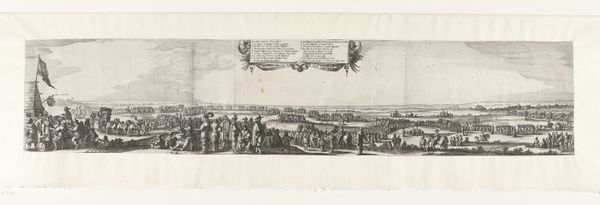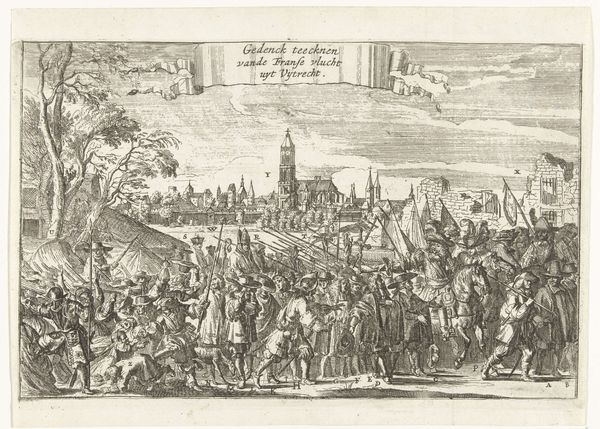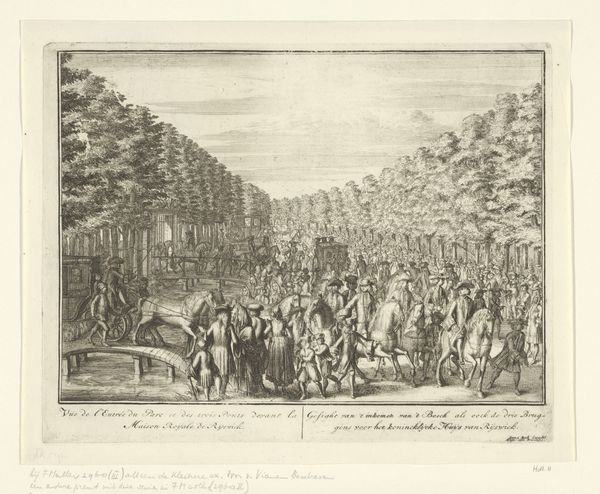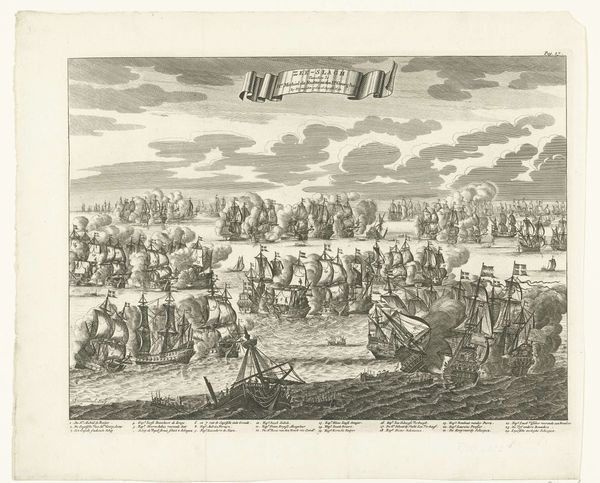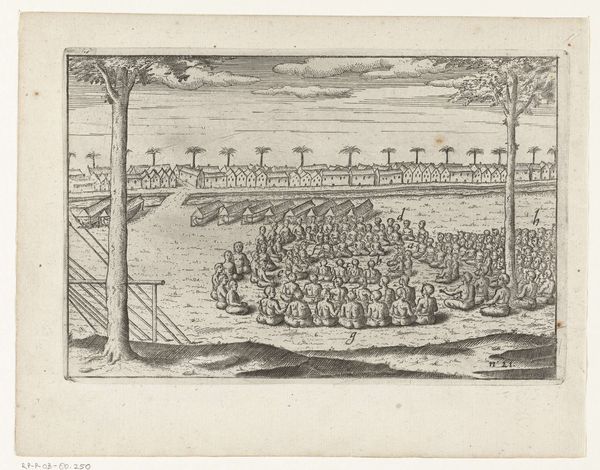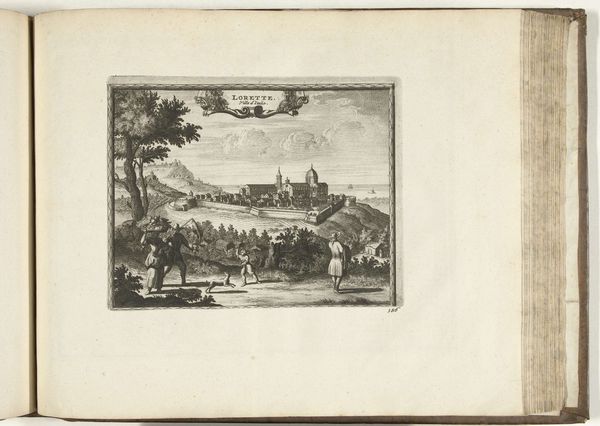
print, engraving
#
baroque
# print
#
cityscape
#
history-painting
#
engraving
Dimensions: height 152 mm, width 192 mm
Copyright: Rijks Museum: Open Domain
Curator: Here we have "The Departure of William III to England, 1688," an engraving by Pieter Pickaert dating from 1689. What are your initial thoughts? Editor: Well, the sheer number of ships immediately grabs your attention. It’s this incredibly dense, almost oppressive formation of masts and sails. And then, in contrast, you have the figures on the shore, appearing almost incidental in the face of this massive fleet. Curator: It's important to consider this image within the context of Dutch history. Pickaert created this print to commemorate William of Orange's voyage to England, which led to the Glorious Revolution. It depicts not just a physical departure, but a pivotal moment in European power dynamics. Editor: Absolutely. The piece resonates with the idea of the singular figure heading into an imperial project and endeavor. And, from a critical perspective, one might think about what this image papers over, too. What about the experience of the colonized during this supposed Glorious Revolution? Curator: That's a valuable point. Consider the perspective presented by Pickaert. The artist wants to show how powerful the Dutch forces were. What kind of messaging this piece would have displayed at the time to local communities who saw this engraving. Editor: And it brings up crucial questions about representation. Who gets to tell the story, and whose perspectives are centered? While Pickaert’s engraving immortalizes William III's ascendance, it does so with many erasures of harm inflicted in other locales and through colonial conquest. Curator: Indeed. By analyzing these historical representations, we gain insight into how narratives were constructed, perpetuated, and, importantly, how we can critically re-evaluate them today. Editor: It highlights the importance of art history to consider both what we see and what we don't. Examining the work through multiple perspectives challenges any singular narrative, instead bringing awareness to these omissions. Curator: Well said. Thank you for enriching my understanding of this piece, focusing not only on who the artwork credits but also whom it invisibilizes.
Comments
No comments
Be the first to comment and join the conversation on the ultimate creative platform.

